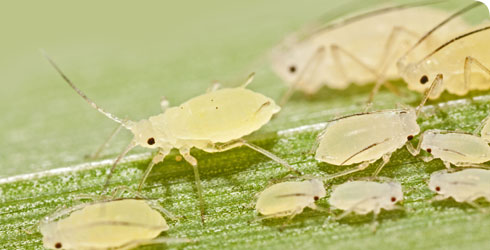Distribution
This species’ full scientific name is Rhopalomyzus (Judenkoa) lonicerae (Siebold) - it does not have a common name.
It is a species of the temperate northern hemisphere.
The Natural History Museum has specimens from many countries in Europe, Canada and the northern USA.
The distribution of this species is described in a recent textbook as Europe, central Asia, west and east Siberia and north America.
Habitat
This species alternates between 2 hosts - grasses and Lonicera shrubs which are members of the honeysuckle family.
Read more about the aphid's relationship with its host plants.
The feeding aphids induce down-curling of the leaves and spots of discoloration in Lonicera, but on grasses the blades seem undistorted even when heavily infested.
The most common grass host is Phalaris arundinacia,which is often found on damp ground near ponds and ditches, including in the Museum's own wildlife garden in central London.
The Lonicera and grass host combination is also found in all other Rhopalomyzus species whose biology has been investigated.
